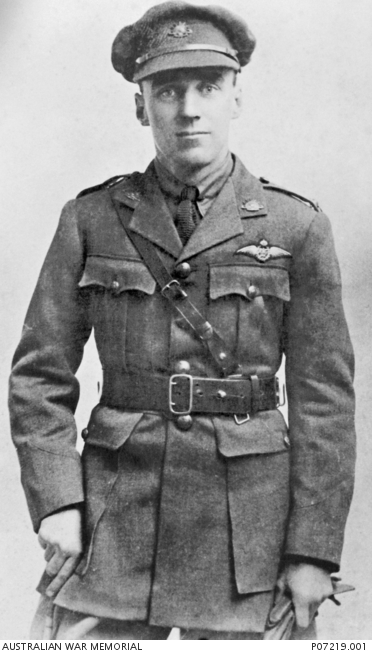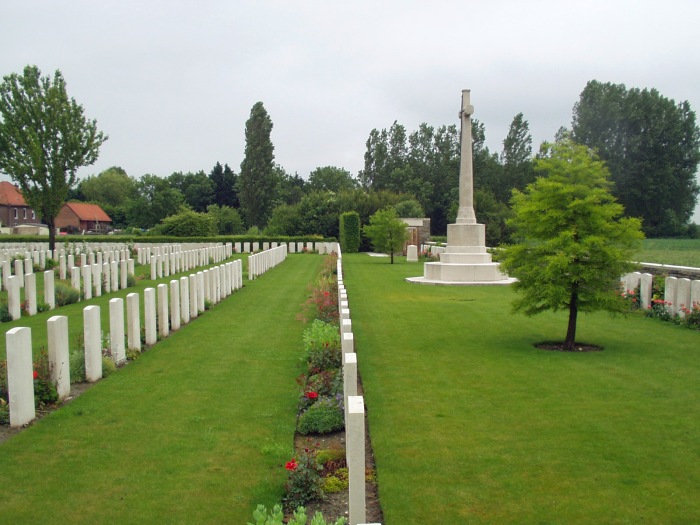
20 Alexander Finnie
Alexander Finnie was a 21 year old sheet metal worker and employed by the Randwick Tramway department. His proud parents living at Botany were Alexander James and Ida Jane (nee Bullock). Alexander also had an older sister who unfortunately died in 1911.
Alex served almost 3 years in the 1st Field Company Engineers and had a long stay at Gallipoli up to the 18th August. A near miss from a shell blast and gas poisoning meant that he was transferred to hospital in Alexandria, very sick and suffering from deafness. Like many others Alex was keen to recover and get back into the fray, and he did, but this time he would do it from the sky as a flying officer.
Alex had transferred to Flying school in England and graduated as a flying officer and was appointed 2nd Lieut. and posted to the Australian Flying Corp.
Now wearing his wings he proceeded overseas to France and reported for duty with the No 4 Squadron AFC, the last squadron to be formed during the first World War.
The 4th Squadron had arrived in France in December 1917 and established itself at Bruay France and operated in support of the British 1st Army, undertaking offensive patrols and escorting reconnaissance machines.

Towards the end of February 1918 the squadron was made up of 24 flying machines, considerably enhancing its capacity for offensive operations.
March 1918 saw an increase in the 4th squadron’s ground attacks and offensive patrols, including a notable engagement with elements of Manfred von Richthofen’s “Flying Circus” on 21 March, during which five enemy machines were downed in an attack led by Captain Arthur Henry Cobby , who would become the AFC’s number one flying ace .
No. 4 Squadron claimed more “kills” than any other AFC unit, 199 enemy aircraft destroyed and 33 enemy balloons were destroyed or driven down.

Cpt Arthur Henry Cobby – DSO, DFC
In May of 1918 the Squadron had moved from Bruay to Clairmarais North and the 4th squadron was heavily involved in strafing and bombing operations in support of the retreating Allied ground forces.
On the 22nd May 1918 Lieut. Finnie was on his usual offensive and balloon patrol in his Sopwith Camel No. D1924. Enemy observation balloons were stationed thousands of feet in the air and tethered to the ground and fiercely protected by machine guns and anti-aircraft artillery known as “Archie”.
Even with incendiary bullets the gas in the balloons was hard to ignite and downing a balloon took a lot of shooting while running a gauntlet of ground-fire and keeping a sharp eye out for enemy scouts trying to protect the balloons.
On this day while diving and firing on enemy balloons Lieut. Alex Finnie collided with fellow flyer Lieut.G Nowland. They both spun to the ground five miles over enemy lines, their planes falling to pieces as they crashed to the ground at Neuf Berquin and both men were killed.
The following eye witness accounts describe the action that saw Alexander Finnie meet his end.
“ We were firing on enemy balloons. I was flying with him and saw him go down. He collided with another chap and they both fell from about 10,000 ft over the German lines. I should certainly say there was little hope of his being alive. I wrote to his people.”
Informant – F/Lieut R.C Nelson 4th Squadron A.F.C
“I knew Lieutenant Finnie in the Squadron. I saw him killed on the 22nd May 1918. The Squadron was then engaged in an offensive patrol near Estaires. I saw Lieutenant Finnie and Lieutenant Nowland attack a German captive balloon. Their machines collided and Lieutenant Finnie’s machine fell. “
Informant – Captain Roy King 4th Squadron A.F.C

Alexander Finnie’s last flight record.
Alexander’s father was notified in 1921 that his son Alex Finnie was exhumed and later reburied in an Imperial War grave at Pont-du-Hem Military Cemetery (Plot II, Row F, Grave No. 19), La Gorque, France.

On this day we also remember and pay tribute to Alexander’s flying mate Lieut. George Nowland who also died in the tragic accident.
Alexander’s page is now available and will continue to be updated ……………………….







